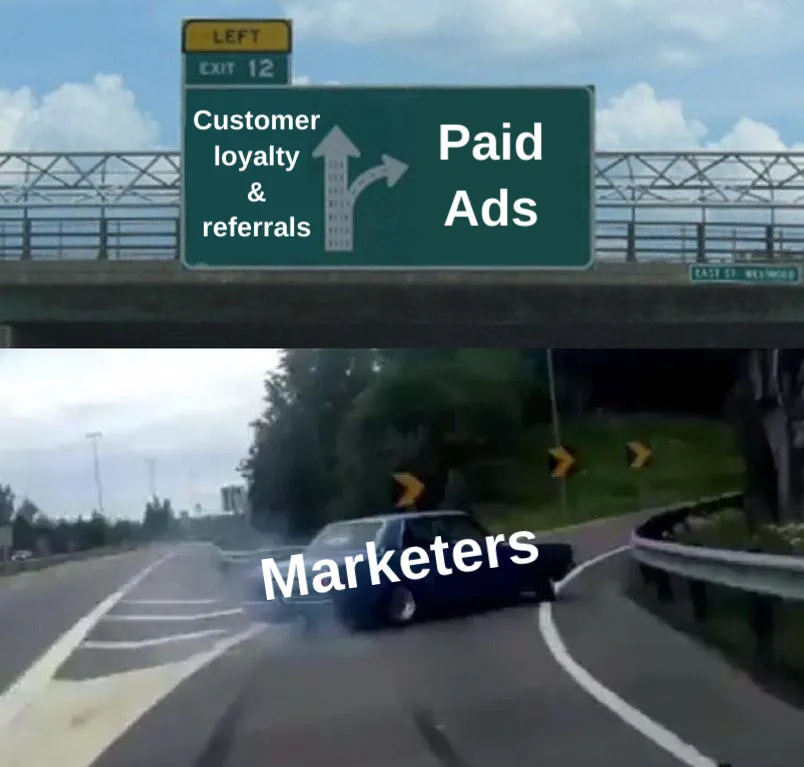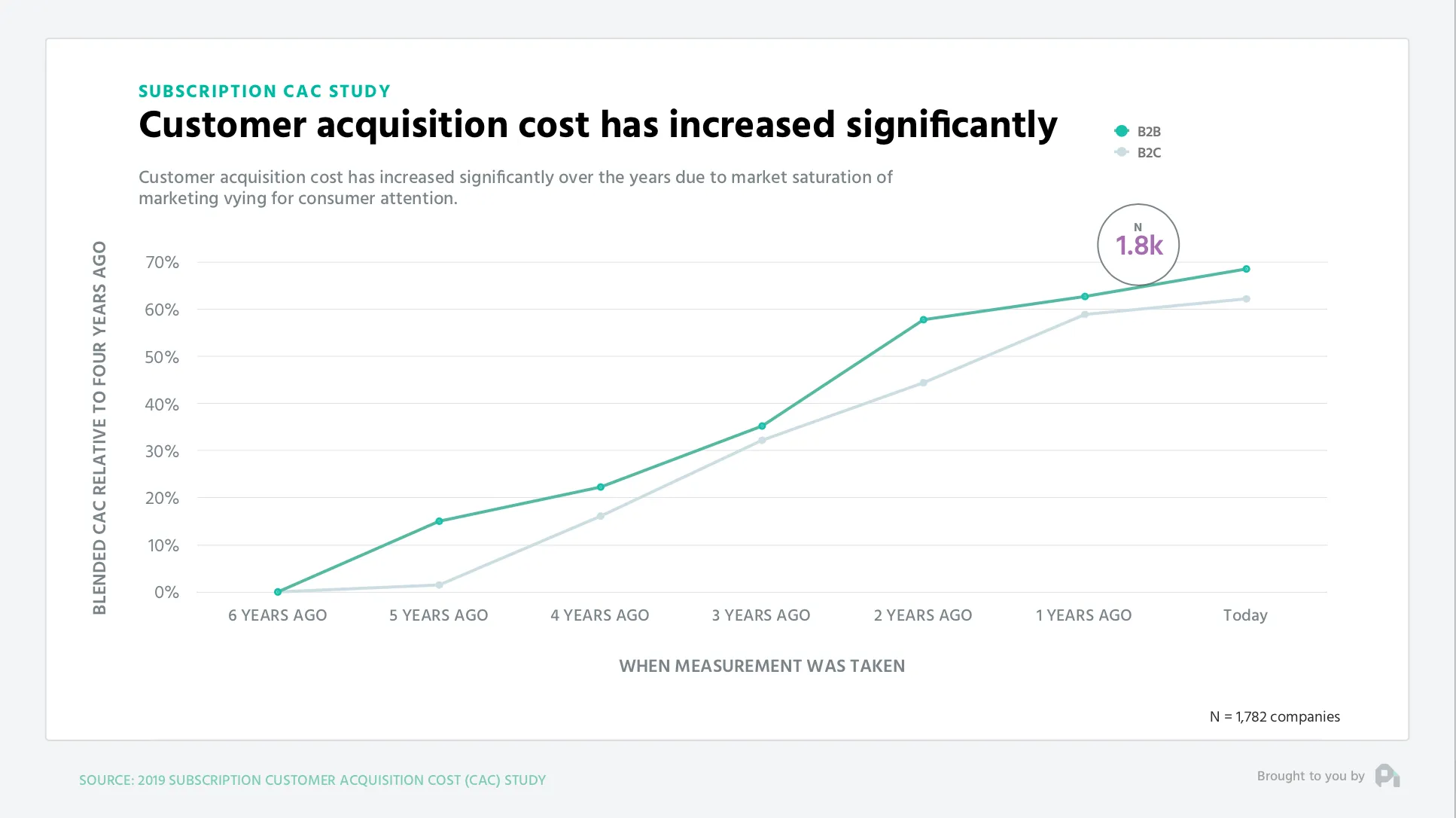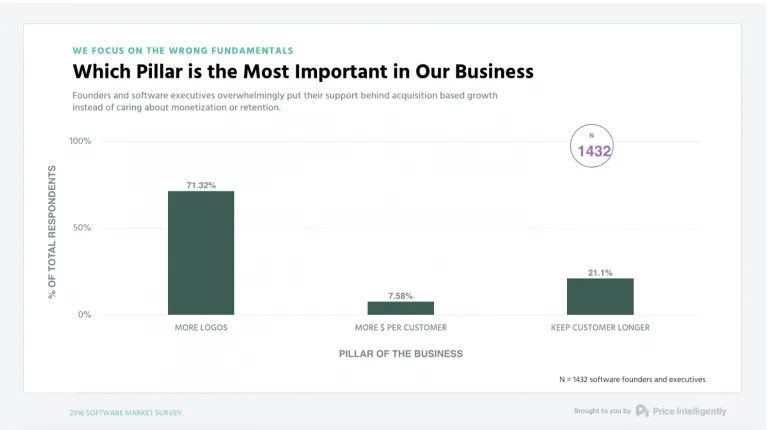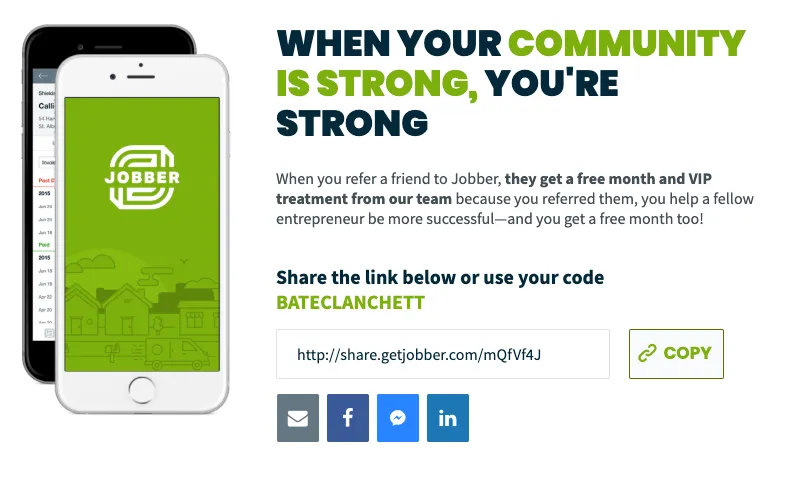Why 2024 is the Year to Engage and Retain Your Existing Customers
Have you ever seen the meme of the car on the highway veering into the turnoff?
It often shows the car or subject making a last-minute turn in the direction of the option they believe to be the easiest or most effective. If you’re a marketer in the driver’s seat trying to grow your brand, what direction will you go?

The turnoff might seem like the familiar route if you’re used to focusing *only* on top of the funnel channels for growth like ads, ads, and more ads. It might even be your only strategy. If that’s the case, you’ve probably noticed that it’s not getting any cheaper to do, and the conversion rate to actual sales opportunities, let alone actual revenue is very low (click-through rates are often <1%) .
As you scale, you’ll soon have to focus exponentially more budget towards ads to see incremental growth.
Of course, there's nothing wrong with online advertising, and paid ads may remain a large portion of your growth strategy. However, adding retention-based marketing strategies that typically have a much higher conversion rate, like customer loyalty and referrals into your mix can lower your acquisition costs, boost customer LTV, and lead to shorter sales cycles overall. So, if you are not incorporating these full-funnel strategies into your 2024 plan, you’re missing out on a major growth opportunity.
The best part is, to get started all you need is a customer base!
How 2020 changed the digital advertising game
While 2020 was a whirlwind in more ways than one, it forced us to think about marketing differently and re-consider the viability of the strategies we were running on autopilot. Many marketers faced constrained budgets, wavering customer loyalty, and the need to pivot and appeal to changing consumer preferences.
2020 made a lot of marketing tactics more complicated, and customer acquisition was no exception.
While it’s no secret to anyone who has managed a paid ads campaign before, a 2019 report from Profitwell indicated that CAC for both B2C and B2B are up nearly 60% compared to 5 years ago:

This is an expected result from competition in the online ad space that has been growing for many years due to increased saturation and new channels being created and filled with content.
To highlight another benchmark, the Interactive Advertising Bureau estimated that ~$25 billion was spent in digital advertising. A number that rose to ~$325 billion ten years later.
Because of the pandemic that defined most of 2020, more fuel was added to this fire and digital advertising costs have only continued to increase.
Companies who relied previously on trade shows and live events as lead generation tactics have all been forced to transition online, making the digital ad space even more crowded and competitive for everyone. Plus, consumer segments financially affected by the pandemic had less to spend which meant more advertising was needed to reach them.
Despite these factors, marketers are still inclined to throw more and more money at paid ads. It’s mainly because investors and top-level executives value growth over profitability, and digital ads seem familiar and somewhat predictable. It makes sense given we value companies based on growth and number of new customers - not customer lifetime value or loyalty.

To add to this, we learn about growth as a linear process. We’re taught that to get more customers, you must go back to the beginning of the funnel and go get “new” ones. It’s rare that companies see growth stemming from the other side of the funnel - with the customers you already have.
With these factors in mind, it’s no surprise that paid ads aren’t going away anytime soon - even with multiple accounts and proof of limited/negative ROI.
To be clear, we’re not here to say that there’s no place for digital ads when it comes to brand growth. But as ad costs continue to rise and effectiveness declines, we encourage you to explore proven strategies based in customer retention and loyalty.
Simply put, it’s time to pump the brakes on the “new-customers-only” mindset if you’re striving for sustainable growth.
Why retention marketing is a better use of your marketing budget
To get started with customer loyalty and retention efforts for growth, you only need one thing: customers!
Retention marketing, also referred to as customer marketing or lifecycle marketing, is the collection marketing tactics you use to engage your existing customers to build customer loyalty, retention, advocacy, and community.
The idea is that you don’t stop marketing at the sale. You place more focus on engaging your existing customers to ensure they’re successful and satisfied with your product/service after they’ve signed the sales contract. Specific tactics can include VIP treatments, personalized training, corporate gifts, customer spotlights, and more.
You might be wondering - Why would I do this if it doesn’t help me “grow” my customer base? Actually, it does! And a few other things too:
• Retention marketing saves you money: It’s 5-25 times cheaper to retain and engage existing customers than to go after new ones. You already have their data on hand, you know they have a need for your product/service, and you don’t need to start from square one explaining your value and differentiators.
• Retention marketing gets you more (better) customers: When you focus on creating loyal brand advocates who are willing to advocate on your behalf, they can bring in your best new customers – New customer acquired through a referral program are 18% more loyal, spend 13.2% more and have 16% higher lifetime values than non-referred customers. (source)
When 92% of consumers trust recommendations from friends and family above all other forms of advertising, you want a community of brand advocates who are engaged, understand the value of your product, and are able & willing to communicate it to others.
• Retention marketing earns you more profit: Increasing retention rates by 5 percent can increase profits by up to 95%, This is a natural result of the first two points – when you save money and attract better customers, your profits increase.
Better yet, existing customers will spend more: 67% more than first-time customers.
What does retention marketing actually look like?
As a loyalty, referral, and rewards platform, we believe in powering your retention strategy with programs and campaigns that leverage rewards to drive loyalty and engage your customers at every stage of the life cycle.
According to research by Bond Brand Loyalty, 66% of consumers modify the amount they spend to maximize reward collection, and 81% of consumers agree that loyalty rewards make them more likely to continue doing business with a brand.
By supercharging your retention efforts with loyalty rewards, you offer additional value that encourages repeat engagement. Whether it’s a gift card, premium software access, exclusive training, or tickets to a (virtual) event, rewards are a proven way to stay engaged well after the onboarding is complete.
For example, when leading small business management platform Jobber understood the value of engaging their existing happy customers, they launched a referral program that rewarded both new and existing users with free subscription months to the software.

Not only does this help Jobber build a successful community of entrepreneurs, but brings in customers with a 5% higher lifetime value and 18% higher average selling price.
How do you retain and engage existing customers with rewards?
The beauty of working with a flexible rewards engine is that you can simply choose any customer action that you track in your app, and reward it based on custom conditions. Every business is different, but we can define a few ways you might use rewards to drive continued engagement:
Reward for app/product usage
Goal-based programs to encourage product usage are typically seen in subscription-based apps or in a B2B environment. By motivating deeper and more consistent product usage, you build power users who are better equipped to provide feedback and share your value proposition with others. Examples:
- A mobile banking app offers a $100 cash reward when the user deposits $1000 into their savings account within 60 days.
- A help-desk software platform offers monthly discounts every time a business adds 2 seats to the license.
Reward for spending
Using rewards to drive repeat purchases and spending goals can take the form of a VIP Program with tiered reward levels, a win-back program to re-engage quiet customers, or an upsell campaign to promote usage of your premium subscription tiers. Examples:
- A meal-kit delivery service grants 50 points with every order. Points can be exchanged for free meals or cooking accessories.
- A movie streaming service offers 1 free month to users who cancelled their subscription and haven’t re-activated in three months.
Reward for reviews and referrals
Asking your mature customers to write a review or testimonial or refer a new customer in exchange for a reward is the portion of retention marketing that will directly fuel your acquisition efforts and bring in your best customers. Examples:
- An online mattress company offers an Amazon gift card when an existing customer refers a friend. The referred customer gets a 25% off coupon to use on their purchase.
- A cloud storage application offers 500 mb of additional storage when a user refers a friend.
Ready to get started?
With a customer marketing platform like SaaSquatch, you have the power to select any user behavior that is tracked within your app, and specify a reward for its completion to ensure it happens often. You can define unique conditions for earning, create multiple reward tiers, and offer a variety of different rewards to create the perfect set of programs across your customer’s lifecycle.